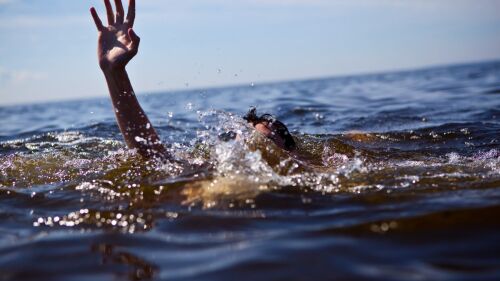Summer has arrived.
And, inevitably, now that summer is here, concerns about water safety, particularly regarding children, become paramount. One term that often surfaces is “dry drowning,” describing incidents where individuals experience respiratory distress after water exposure without submersion. While not a medically recognized term, understanding the signs and differences between dry drowning, secondary drowning, and delayed drowning is crucial for prevention and timely intervention.
What is dry drowning?
Dry drowning refers to respiratory issues that occur after water enters the airway, causing the vocal cords to spasm and close, leading to breathing difficulties. Symptoms can appear shortly after exiting the water and may include coughing, chest pain, and difficulty breathing.
What are the symptoms of dry drowning?
Symptoms, according to Purva Grover, medical director of Cleveland Clinic Children’s pediatric emergency department, include:
- coughing
- vomiting
- fever
- struggling for breath
- mood swings
Grover said affected individuals may start showing symptoms 24 to 48 hours after a near-drowning incident.
Does dry drowning actually exist?
In his book, “Auerbach’s Wilderness Medicine,” Dr. Paul S. Auerbach, a leading expert on wilderness medicine and chief of the Massachusetts General Hospital Division of Wilderness Medicine, writes that the actual “existence of dry drowning has not been proven.” Furthermore, Dr. Auerbach says, “if laryngospasm does occur, it likely relaxes with progresses hypoxemia.” Existence of such a reflex, according to Dr. Auerbach, holds “no prognostic or treatment significance.” He asserts that the term “dry drowning” should not be used.
Why is dry drowning still used as a diagnosis?
According to Dr. Auerbach, dry drowning, wet drowning, active drowning, passive drowning, silent drowning, near-drowning and secondary drowning are all terms widely used by laypersons and some medical professionals. He said it’s important to be familiar with them because of this, but a consensus panel at the 2002 World Conference on Drowning and the World Health Organization concluded that all of the above terms should no longer be used in drowning terminology.
Can you drown hours after swimming?
Yes, in cases of secondary drowning, symptoms such as coughing, difficulty breathing, and fatigue can develop several hours after the initial water exposure. It’s essential to monitor for these signs and seek medical attention if they occur.
Regardless of the classification, what’s the best way to prevent drownings?
It’s important that anyone planning to spend time in or near the water know how to swim. It’s equally as vital to know how to rescue someone who’s drowning and also the basics of CPR. Not all pools, lakes and beaches have a lifeguard on duty.
Designate someone as a “watcher” to keep an eye on those in the water. Make sure your attention is on the water and not on your cellphone or book.
This article, originally published in July 2017, has been updated with additional information.


















